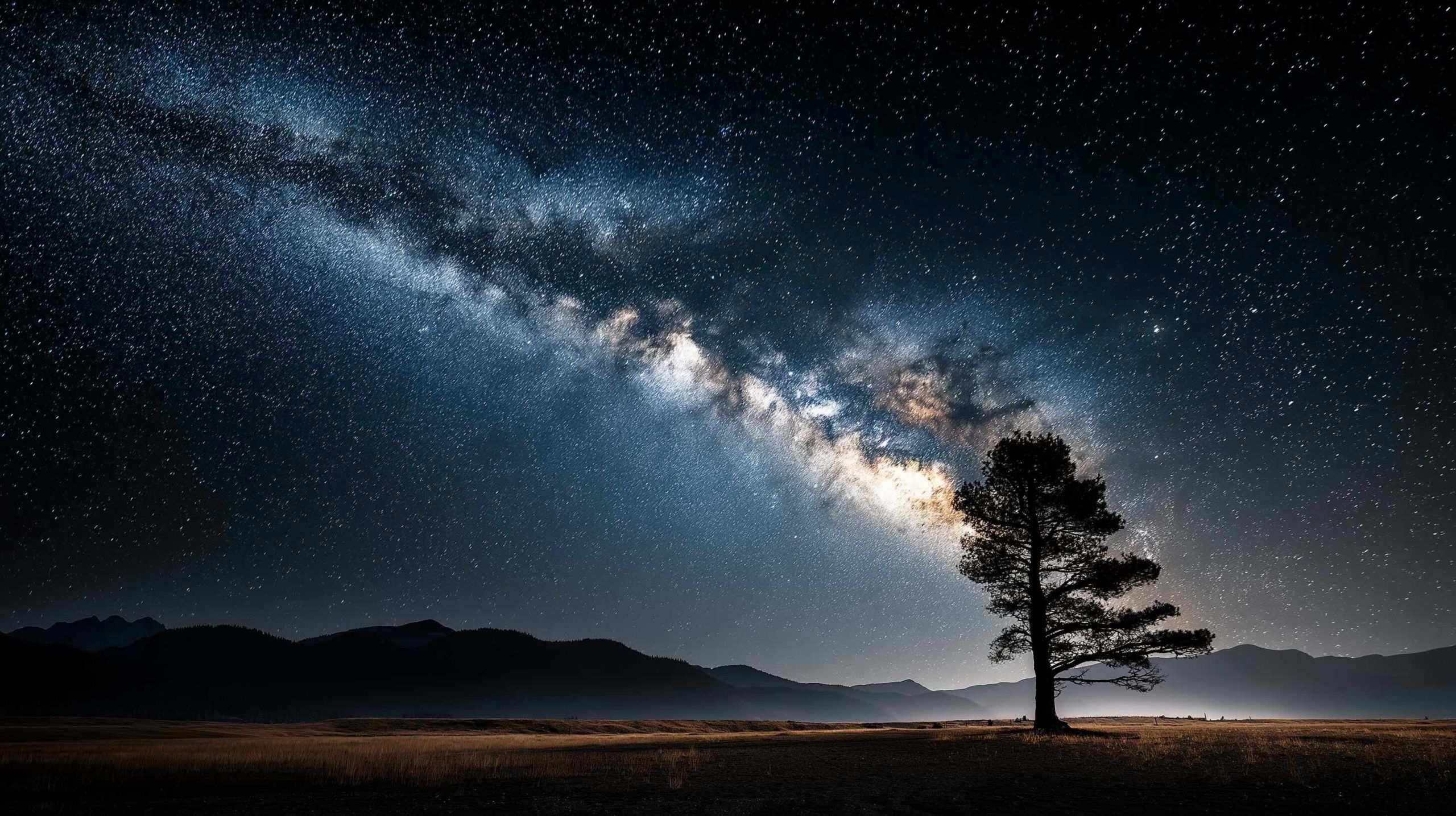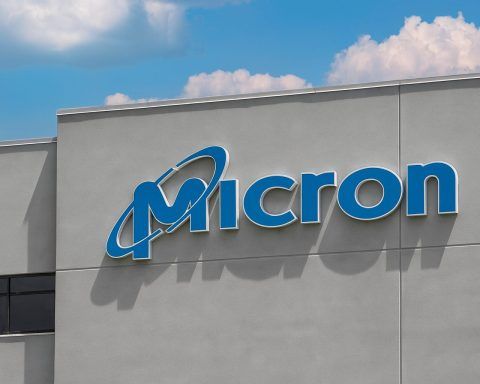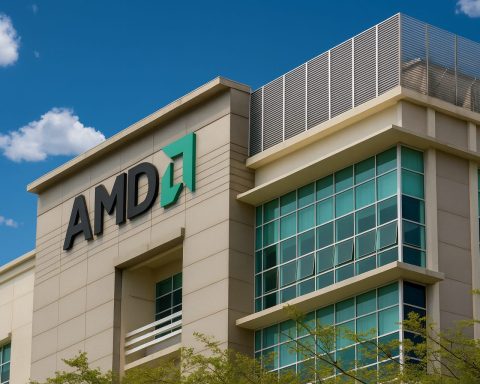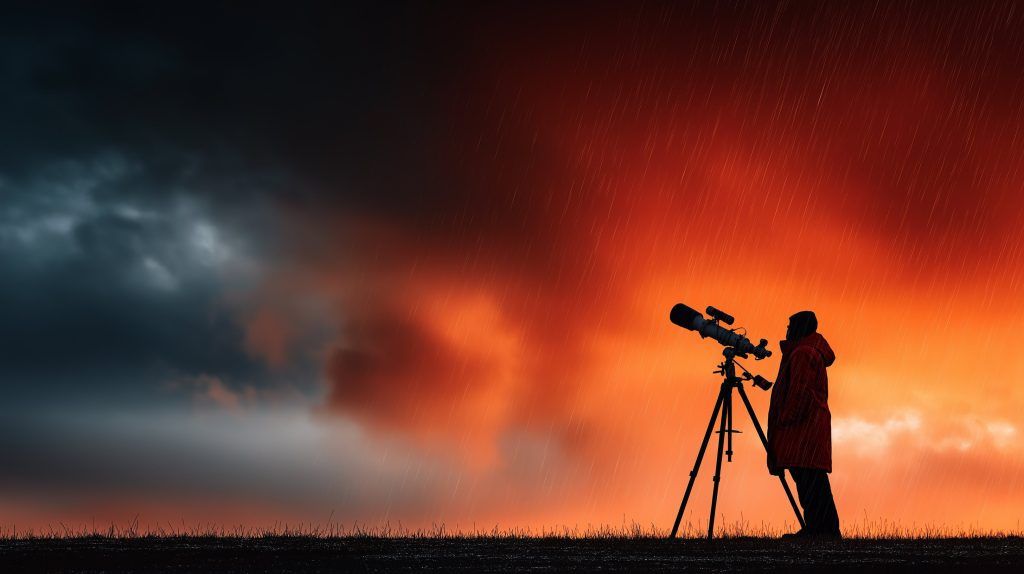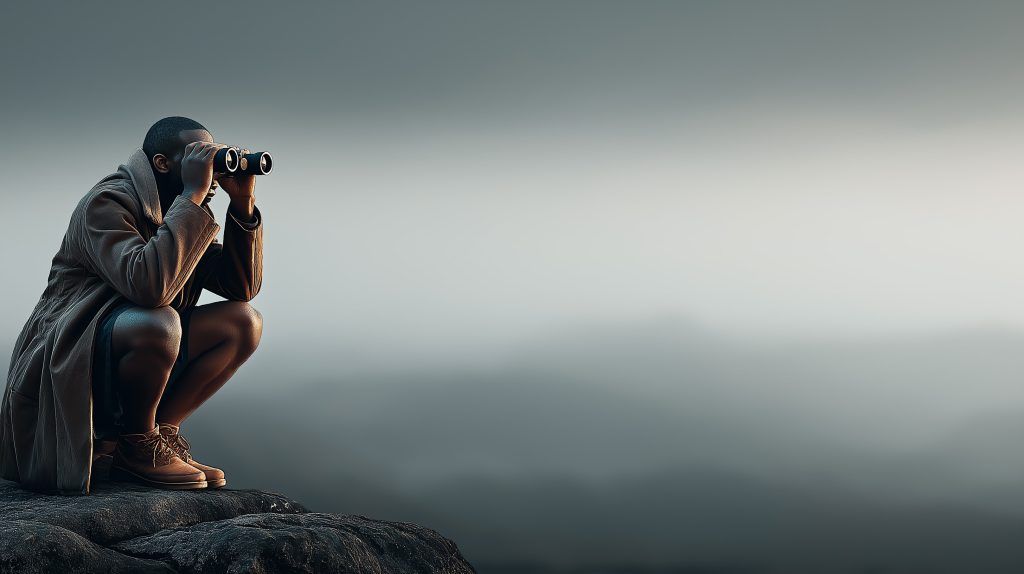- Nikon Z8 features a 45.7 MP full-frame stacked CMOS sensor with native ISO 64–25,600 and a Night Vision mode for dark-sky shooting, priced around $4,000.
- Canon EOS R6 Mark II delivers 24.2 MP, ISO up to 102,400, and 8 stops of in-body image stabilization, making it a strong low-light option at about $2,500.
- Canon EOS R8 weighs about 461 g, offers 24.2 MP and strong high-ISO performance, with a travel-friendly price around $1,299 and automatic white balance that helps reduce light-pollution glow in JPEGs.
- Sony’s A7 IV and A7S III remain astro-friendly, the A7 IV with 33 MP and ISO up to 204,800 and the A7S III with 12 MP and ISO up to 409,600, priced roughly $2,500 and $3,500 respectively.
- OM System OM-1 Mark II adds Starry Sky AF and Live Composite, weighs about 1.3 pounds, and is offered around $1,999, delivering portable astro performance.
- ZWO ASI2600MC Duo combines a 26 MP APS-C sensor (Sony IMX571) imaging sensor with an integrated guiding sensor, offers TEC cooling to -35°C, 16-bit ADC, and is priced near $2,199.
- ZWO ASI585 MC Pro provides a 1/1.2-inch IMX585 sensor with cooling and is marketed as an affordable entry cooled astro camera at about $599.
- ZWO ASI6200MM uses a 61 MP full-frame sensor with 16-bit output and multi-stage cooling for high-end astro imaging, with pricing well above $3,000.
- Celestron Origin Intelligent Home Observatory is a smart all-in-one system featuring a 6-inch Rowe-Ackermann Schmidt Astrograph f/2.2, integrated Sony STARVIS IMX178 sensor, built-in GoTo alt-az mount, and real-time live stacking at roughly $3,999.
- Unistellar eVscope 2 is a premium smartscope with a 114 mm Newtonian mirror and a Nikon-designed micro OLED eyepiece, offering autonomous field detection and plate solving, priced around $4,199.
Astrophotography is entering a golden age of innovation. From advanced mirrorless cameras with night-vision modes to AI-powered smart telescopes and ultra-precision mounts, the latest gear of 2025 and 2026 is revolutionizing how we capture the cosmos. In this in-depth comparison, we break down the new and upcoming astrophotography devices – both consumer and professional – including cameras, dedicated astro sensors, smart/all-in-one telescopes, mounts, and even software tools. Whether you’re a beginner stargazer or a seasoned astro-imager, these cutting-edge tools promise sharper images, easier workflows, and more breathtaking views of the universe. 🚀✨
1. High-Octane Astrophotography Cameras (DSLR/Mirrorless)
Modern mirrorless and DSLR cameras have upped their game for night photography, offering large sensors, low-noise performance, and even astro-specific features. Here are the standout models lighting up the night sky in 2025–2026:
- Nikon Z8 – “Baby Z9” with Astro Muscle: Touted as “the best mirrorless camera for astrophotography on the market” [1], Nikon’s 45.7 MP Z8 packs the flagship Z9’s prowess into a smaller body. It features a full-frame stacked CMOS sensor (native ISO 64–25,600) that delivers clean, detailed night shots. Uniquely, the Z8 caters to astro shooters with a Night Vision mode (which dims the LCD to red) and illuminated buttons for dark-sky use [2]. These handy astro-specific touches ensure you “get pin-sharp stars every time” without ruining your dark adaptation [3]. Use-case: Advanced amateurs & pros; great for deep-sky and landscape astrophotography. Price: ~$4,000 (body) – high-end investment [4] [5]. Expert take: “It can handle anything…Astrophotography, wildlife, landscape – you name it” [6], making it a versatile powerhouse beyond just stars.
- Canon EOS R6 Mark II – Low-Light Champion: Canon’s 24.2 MP R6 Mark II is highlighted by Canon experts as “particularly good at taking low-light pictures of deep-sky objects with little noise” [7]. Its full-frame sensor and high ISO range (up to ISO 102,400) coupled with in-body image stabilization excel at long exposures [8]. This makes the R6 II a great tool for capturing faint nebulae and galaxies without a tracker. Use-case: Intermediate to pro photographers needing clean high-ISO performance. Price: ~$2,500 (body). Unique features: 8-stop IBIS, 4K video for night timelapses, and Canon’s renowned color science for natural star colors. Canon’s verdict: “a great instrument for astrophotographers” thanks to its balance of sensitivity and stabilization [9].
- Canon EOS R8 – Travel-Friendly Star Shooter: For those who hike to dark-sky sites, the ultralight Canon R8 (just 461 g) is “perfect for traveling or trekking to remote dark locations” [10] [11]. This 24.2 MP full-frame mirrorless delivers excellent high-ISO quality in a compact body. While it lacks some pro features, testers report “it handles high ISO levels exceptionally well for astrophotography” [12]. Use-case: Beginners and enthusiasts on the go; Milky Way panoramas and nightscapes. Price: ~$1,299 (making it one of the most affordable full-frame astro cameras) [13] [14]. Notable: Its automatic white balance effectively removes light pollution’s orange glow in JPEGs [15], useful for quick shots of the night sky.
- Sony A7 IV / A7S III – The Low-Light Dynamos: Sony’s full-frames remain favorites for astro. The 33 MP A7 IV offers a great balance of resolution and noise control (ISO up to 204,800) [16], while the 12 MP A7S III is a low-light monster with huge pixels and ISO to 409,600, ideal for video or real-time Milky Way footage. Use-case: The A7 IV suits all-purpose astro and daytime use; the A7S III is niche for extreme low-light (e.g. real-time aurora or star videos). Price: A7 IV ~$2,500; A7S III ~$3,500. Unique selling points: Unmatched high-ISO performance (especially the A7S series), and a huge ecosystem of fast lenses. (Sony A7 series users frequently achieve beautiful noise-free nightscapes given the cameras’ backside-illuminated sensors and high dynamic range – as analyzed by multiple astrophotography reviews.) [17]
- OM System OM-1 Mark II – Micro Four Thirds with Astro Tricks: Don’t underestimate this compact 20 MP camera. Reviewers were “very pleasantly surprised by its astrophotography performance” [18] thanks to some clever features. The OM-1 Mark II (formerly Olympus) includes Starry Sky AF (an AI-based autofocus that locks onto stars for “pin-sharp stars” [19]) and Live Composite mode (which stacks long exposures in-camera for star trails or deep-sky, without overexposing the foreground [20] [21]). Use-case: Enthusiasts who value portability – at 1.3 lbs, it’s great for travel astrophotography or as a second rig. Price: ~$1,999 (body) – a premium MFT camera. Expert quote: “It has a whole array of handy features for astrophotography — including Starry Sky AF and Live Composite… certain aspects of shooting astrophotography [are] easier than ever” [22] [23]. The trade-off is the smaller sensor; it can’t match full-frame for noise, but its computational features narrow the gap impressively.
Did You Know? Pentax DSLRs (like the K-1 series) feature an “AstroTracer” that physically shifts the sensor to track stars for short exposures – effectively acting as a mini equatorial mount. While not a 2025 model per se, it’s a unique built-in tool for beginner astrophotographers. This kind of innovation shows how even traditional DSLRs have catered to the astro market.
Camera Comparison Highlights: Full-frame models (Nikon Z8, Canon R6 II, Sony A7) capture the faintest details with low noise, ideal for deep-sky imaging [24] [25]. Mid-resolution (~20–33 MP) tends to be a sweet spot: enough detail for large prints, but manageable noise for long exposures [26] [27]. For those on tighter budgets, entry full-frames like the Canon R8 or retro-styled Nikon Zf offer great high-ISO performance in 24 MP sensors without breaking the bank [28] [29]. Whichever you choose, a solid tripod and fast wide lens (e.g. 15-35mm f/2.8) will complement these cameras for stunning Milky Way shots [30] [31].
2. Dedicated Astro Cameras (Cooled CMOS Powerhouses)
When ultimate sensitivity is required, dedicated astronomy cameras (often cooled CMOS sensors) are the go-to. These devices, usually used with telescopes, forego the frills of consumer cameras to focus on capturing the night sky with maximum efficiency. 2025–2026 has seen new sensors and clever dual-use designs:
- ZWO ASI 2600MC Duo / ASI 533MC Duo – All-in-One Imaging & Guiding: ZWO has been a leader in astro CMOS, and their new “Duo” cameras combine two sensors in one unit – a primary sensor (for imaging) and a secondary small sensor for autoguiding [32]. For example, the ASI2600MC Duo uses a 26 MP APS-C sensor (Sony IMX571, known for low read noise and zero amp-glow) plus an integrated guiding sensor, eliminating the need for a separate guide scope [33]. Use-case: Deep-sky enthusiasts who want to simplify their setup (one less camera and cable). Price: ~$2,199 for the 2600MC Duo. Notable features: TEC cooling to -35°C below ambient (dramatically reducing noise), 16-bit ADC for high dynamic range, and USB hubs built-in for clean cable management. Why it’s unique: The dual-sensor design makes astrophotography more plug-and-play – one device handles imaging and tracking corrections simultaneously [34].
- ZWO ASI 585 MC Pro (2024/25) – Affordable Entry Cooled Cam: Announced at ~$599 [35], the new ASI585MC Pro offers a 1/1.2” sensor with 8.3 MP (IMX585, highly sensitive in near-IR). It’s an attractive option for beginners graduating from DSLRs. With cooling and high quantum efficiency, it outperforms unmodified DSLRs, especially on emission nebulae (the sensor has enhanced Hα sensitivity) [36]. Use-case:Beginners & budget-limited imagers for deep-sky (paired with small refractors) or as a dedicated planetary camera (its sensor can do high-speed readouts). Unique selling point: Very low read noise and no star-eating noise reduction – meaning it preserves faint stars that some DSLRs might miss. “An unmodified DSLR doesn’t do well with bright nebulae, so it’s worth getting a dedicated astro camera” as one expert noted, and cameras like the 585MC make that step easier [37].
- ZWO ASI183MC Pro – Proven Deep-Sky Performer: While not brand-new, the 20.2 MP ASI183MC Pro remains a popular mid-tier choice and exemplifies the capabilities of cooled color astrocams. It features a 1-inch backside-illuminated CMOS sensor with high sensitivity and 12 stops dynamic range [38] [39]. The dual-stage TEC cooling and low read noise yield clean long exposures, capturing “an incredible amount of detail” even with shorter sub-exposures [40] [41]. Use-case: Enthusiast deep-sky imagers targeting galaxies, nebulae, and even planets (with ROI video mode up to 19 fps). Price: ~$800. Expert comment: “For enthusiastic astro-shooters, it’s a fantastic buy as it can photograph all kinds of night-sky subjects… an affordable entry point to the world of expensive, cooled cameras” [42] [43]. (Note: Monochrome variants like ASI183MM are available for those who want maximum sensitivity and use filters.)
- High-End Full Frame Monsters: For professionals, large-sensor astrocams released recently push the envelope. The ZWO ASI6200MM (released just prior to 2025) uses a 61 MP full-frame sensor (the same IMX455 in the Nikon Z7) and delivers stunning 9576×6388 resolution. Paired with LRGB and narrowband filters, it produces APOD-worthy images. Similarly, QHYCCD’s line (e.g., QHY600, using the same sensor, or the upcoming QHY411 with a 120 MP medium-format sensor) are aimed at observatory setups. Use-case: Advanced astrophotographers and institutions doing sky surveys or detailed mosaics. Pricing: Very high – $3,000+ for full-frame cooled mono cameras (and $10k+ for the largest sensors). Unique features: 16-bit output, extremely low dark current with multi-stage cooling, and in some cases built-in fiber optic data interfaces for fast transfer. (While these weren’t “announced in 2025,” they continue to be flagship tools into 2026, and no roundup is complete without acknowledging them.)
- Innovations – Dual-Band and Planetary Specializations: Camera makers have also introduced models for specific niches. Some new one-shot color cameras include a “dual-band” mode or filter integration, capturing Hα and OIII nebula emissions effectively in light-polluted areas (e.g., the Player One Neptune-C II has dual-band optimized sensor coatings). On the planetary side, high-speed USB3 cameras like the new QHY5III-678M (mono) and ASI485MC allow video frame rates of 100+ fps at 2 megapixel resolution, perfect for lucky imaging of planets. These leverage Sony’s latest STARVIS sensors with superb infrared sensitivity for capturing planetary detail (e.g., capturing Jupiter’s moons’ eclipses in IR).
Why choose a dedicated astrocam? Unlike DSLRs, these cameras are purpose-built for the cosmos – they often have no IR-cut filter (sensitive to the deep red Hα glow of nebulae), they connect to a laptop or mini-computer for control, and many require 12V power for cooling. The result: you can take long exposures (5, 10, 20+ minutes) with minimal thermal noise. As one guide put it: dedicated astrocams “are more sensitive to near infrared wavelengths” and “for astrophotographers who want to image galaxies, nebulas and deep-space objects, mounting a camera onto a telescope is the way to do it”* [44] [45]. Just be aware that using them involves a learning curve – you’ll capture in FITS files, need image calibration (darks/flats), and processing software (PixInsight, etc.) to assemble the final images.
3. Smart Telescopes & All-in-One Astro Systems
Perhaps the most dramatic innovation for casual astronomers is the rise of smart telescopes – devices that integrate a telescope, camera, computer, and mount, and often use AI to align and stack images in real-time. No need to polar align or tweak focus endlessly – these “astro appliances” aim to make deep-sky photography as easy as tapping an app. In 2025 and 2026, we see both premium and budget entries in this category:
- Celestron Origin “Intelligent Home Observatory” – Observatory in a Box: Debuting in late 2024, the Origin is a complete smart observatory system that wowed reviewers (“I’m in love… this product has wooed me” [46] writes one seasoned editor). It consists of a 6-inch Rowe-Ackermann Schmidt Astrograph (RASA) f/2.2 optical tube with an integrated Sony STARVIS IMX178 color CMOS sensor [47] [48], all mounted on a fully automated GoTo alt-az base (derived from Celestron’s NexStar). Specs: 6″ aperture, 335 mm focal length (fast optics), 6.4 MP sensor (2.4µm pixels) [49] [50], built-in filter drawer (accepts 1.25″/2″ filters) [51], internal battery for ~6 hours, and an app-based interface. Use-case: The serious amateur or institution that wants quick setup and a hassle-free imaging session from a backyard or remote property. Pricing: ~$3,999 [52](it’s premium – about the cost of a high-end mount + telescope, but here all integrated). Unique features: Real-time live stacking and image enhancement on your tablet; a built-in light pollution/nebula filter (optional accessory) for emission nebulae [53]; and automated focus and dew control (a heated dew shield that kicks in as needed) [54] [55]. Expert commentary: The Origin “blends stargazing and astrophotography in an immersive experience… a pioneer in this new era of astronomy” [56] [57]. Essentially, it’s like having a mini Hubble in your backyard – point it via an app, and it will find the target, track it, stack images, and even narrate what you’re observing with an audio tour! [58] [59]
- Unistellar eVscope 2 – The Luxe Urban Stargazer: Unistellar’s eVscope 2 (the successor to the original 4.5″ eVscope) remains one of the most polished smartscopes. With a 114 mm Newtonian mirror and a low-light sensor, it live-stacks images of galaxies and nebulae in minutes, even under city skies. Its party trick is the Nikon-designed micro OLED electronic eyepiece, which simulates the experience of a traditional telescope eyepiece but with the amplified light of the digital sensor [60]. Reviewers noted “no expense has been spared… we loved the Nikon eyepiece and the all-round premium experience” [61], including details like a lens cap that hides a Bahtinov mask for fine focus [62]. Use-case: Urban astronomers, outreach and education (crowds love the easy viewing). Price: ~$4,199 – premium. Unique features: Autonomous field detection (it aligns itself using plate-solving), and citizen science integration – Unistellar users can contribute to asteroid occultation observations or supernova hunts coordinated through the app. In the eVscope 2 review, it’s noted that its field of view is optimized for larger deep-sky objects, delivering fantastic views of wide targets [63]. However, planetary imaging is not its forte (like most smartscopes, it has a relatively short focal length and alt-az mount, limiting planetary resolution).
- Vaonis Stellina and Vespera – Futuristic Design Meets Ease of Use: Vaonis, a French startup, pioneered the art museum-worthy smartscope design. Stellina (released a few years ago) is a 80 mm refractor in a sleek robotic unit; Vespera (2022) is its smaller 50 mm sibling at a more accessible price. In 2025, these are still relevant: “With live image stacking, you can watch galaxies emerge from the darkness before your eyes and share those images with family and friends,” says one review [64] [65]. The Vespera weighs only 5 kg and is highly portable; Livescience calls it “a fun and enjoyable entry point… one of the more affordable smart telescopes on the market” [66] [67] (though at ~$2,499 it’s still costly). Use-case: Beginners with a focus on visual experience and casual imaging. Unique features: Both use Vaonis’s Singularity app with a Mosaic Mode(stitches multiple fields for wide nebulae like North America Nebula) [68] and an automated “playlist” to observe multiple targets in a night [69]. Vespera’s large 1.6° field makes it great for big nebulae and comets, though “the field is too large for effective planetary imaging,” the review notes [70]. Translation: stick to deep-sky wonders like Andromeda Galaxy or Orion Nebula, which it captures nicely in a few minutes of stacking.
- DwarfLab DWARF II & III – Budget Smartscopes Break Barriers: DwarfLab shook things up by crowdfunding DWARF II, a twin-lens periscope-like smart telescope under $500. In 2025 they followed up with DWARF 3, bringing major upgrades while keeping price low (~$599) [71]. The DWARF 3 features a 35mm apochromatic main lens (f/4.3) with a Sony IMX678 sensor and a secondary wide-angle lens [72] [73]. It also introduced an optional equatorial mode – via a tiny built-in wedge, you can tilt it to track in one axis and avoid field rotation during longer exposures [74]. Use-case: Beginners and students; ultra-portable astronomy (it weighs only 1.3 kg and fits in a backpack) [75] [76]. Unique features: Three built-in filters (a “Light Pollution/astro” filter, a dual-band narrowband filter for nebulae, and a plain VIS filter for daytime) selectable in-app [77] – this is remarkable at this price point. The app offers AI-based enhancements: “AI enhancement does not add synthetic data, but reduces noise, sharpens details, and improves contrast,” allowing decent images straight out of the device [78] [79]. A reviewer called it “the ultimate in portability” and noted DWARF 3 “takes the best of DWARF II and pushes the boundaries of what a tiny telescope can do” [80] [81]. In side-by-side testing, it produced credible images of Orion Nebula and more [82], proving that even small optics + smart tech can reveal the cosmos.
Expert Verdict on Smartscopes: Sky & Telescope magazine reported from NEAF 2025 that “smartscopes starred at this year’s…Forum”, reflecting how mainstream these devices have become [83]. Seasoned astronomers appreciate their outreach potential and rapid setup, though they caution that traditional telescopes + dedicated cameras still have the edge in raw image quality and flexibility. Still, as one Astronomy.com editor wrote: “The DWARF 3 is a testament to how far compact astroimaging technology has come… appealing to beginners and experts alike” [84]. These devices are lowering the barrier to entry – you can be capturing decent deep-sky photos on your first night without ever learning about polar alignment or collimation.
4. Mounts & Tracking Systems: Precision Meets Portability
A stable, accurate mount is the unsung hero of astrophotography – even the best camera is useless if your stars trail. The trend for 2025–2026 is harmonic drive mounts and other lightweight trackers that pack high capacity in a portable form. Meanwhile, classic mounts get incremental upgrades. Let’s compare the latest:
- Harmonic Drive Mounts Go Mainstream: Harmonic drives (strain wave gears) allow mounts to carry heavy loads with little or no counterweights, and they’ve exploded in popularity. The ZWO AM5 (released 2022) and new ZWO AM3 (2023) exemplify this. The AM5 can carry ~13 kg (28 lb) without a counterweight (20+ kg with one) yet weighs only 5 kg itself – perfect for a travel setup. The ZWO AM3 is an even smaller variant (approx 8 kg capacity) and “a lightweight yet powerful equatorial/alt-az mount” for astrophotography [85]. Price points are around $2,000 for AM5 and $1,499 for AM3 [86]. In development is Sky-Watcher’s upcoming “Star Adventurer 100i” (a tentative name), which is expected to be a budget harmonic mount ($1,695) making this tech more affordable [87]. Use-case: Intermediate to advanced imagers who want portability (no heavy counterweight bar) but still need high precision for long exposures. Unique feature: Many harmonics (e.g., those by ZWO, Pegasus, iOptron’s HEM series) support dual mode – you can use them in Alt-Az mode for visual or quick EAA (Electronically Assisted Astronomy), or Equatorial mode for serious imaging. Keep in mind: harmonic mounts often have some periodic error and require smoothing via guiding; they also aren’t cheap. But their convenience is undeniable for field work.
- Premium Mount Upgrades: In the high-end realm, Astro-Physics announced the AP 1150GTO in 2025 (following on their legendary AP1100). This massive mount, likely aimed at observatories, wasn’t priced at announcement [88], but expect it in the ~$10k+ range. European maker 10Micron teased an enhanced performance GM1000 HPS II for 2025 (with even more precision) [89]. These expensive mounts boast unguided tracking abilities (thanks to absolute encoders) for minutes-long exposures – useful for remote observatories or researchers. Use-case: Professional astrophotographers, universities, and serious amateurs with permanent setups. Selling point: Rock-solid build and extremely low periodic error (often <0.3″ rms with encoders), meaning less need for guiding corrections.
- Mid-range Workhorses (Refreshed): Not everyone needs the latest tech – tried-and-true mounts like the Celestron Advanced VX (AVX) or Sky-Watcher EQ6-R Pro remain popular in 2025 and have seen minor firmware tweaks and bundle deals. For instance, Celestron is bundling the new 6″ RASA astrograph with the AVX mount as a complete $1,699 imaging package [90] – a fantastic wide-field setup for beginners moving to dedicated astrograph telescopes. The AVX (30 lb capacity) was even picked as “Best overall telescope mount” in a 2025 Popular Science guide for its balance of portability and payload [91] [92]. Use-case:Beginners to intermediates with mid-sized scopes (refractors up to ~130mm or reflectors up to ~8”). Price: ~$1,200 (mount head + tripod). Note: These equatorial mounts use traditional worm gears, which can require periodic adjustment; however, they offer proven performance and are supported by rich ecosystems of guiding kits and add-ons.
- Star Trackers and Hybrids: For wide-field milky way photographers and hobbyists, ultra-portable trackerscontinue to evolve. The Sky-Watcher Star Adventurer GTi (released 2022) remains a hot choice – unlike the older manual Star Adventurer, the GTi has GoTo and can be controlled via Wi-Fi. iOptron’s SkyGuider Pro and newer SkyHunter offer alternatives, carrying a DSLR and lens or small scope (up to ~5 kg) in a backpack-friendly kit. New for 2025, Benro Polaris introduced firmware adding sky tracking to their smart tripod head – blending photography timelapses with basic astrotracking (interesting for landscape astrophotographers who want one device for multiple uses). Use-case: Milky Way shooters, eclipse chasers, and anyone needing a travel mount for lightweight setups. Price: $300–800. Trend: Some of these trackers now incorporate ST-4 guider ports or even autoguiding via smartphone, bringing better accuracy for longer (~5 min) exposures.
Mount Trends: The overarching trend is portability without sacrificing precision. As one review put it: the latest harmonic mounts are “ultra-portable precision for astrophotography”, marrying high payload with grab-and-go convenience [93]. For beginners, though, don’t overlook manual Dobsonian mounts for visual or simple tripod setups for nightscape photography – not every astro photo needs a computerized mount (star trail photos, for example, are best done on a fixed tripod!). But if your goal is crisp, pinpoint stars in long exposure images, investing in a good mount is key. A reliable mount will outlast multiple camera or telescope upgrades in your astrophotography journey.
5. Software & AI Tools: Reaching for the Stars in Post-Processing
Capturing data is half the battle – making a stunning image from raw frames is the other half. Fortunately, 2025–2026 has ushered in AI-assisted software that greatly enhances astrophotography processing. From noise reduction to star removal and intelligent stacking, here’s what’s new on the astro software front:
- Astro Panel X 2026 (Photoshop Plugin) – AI “Luna” Revolution: Launched mid-2025, Astro Panel X 2026 is being hailed as a “complete redesign” of the popular Photoshop astro-editing panel, bringing “powerful automation, artificial intelligence, and unmatched performance” [94]. Its headline feature is Luna AI, an engine that “identifies stars, nebulae, galaxies, and even planetary details… labeling these structures automatically” [95]. This means the software can auto-select and mask different sky objects for targeted editing (no more tedious manual masking of the Milky Way vs foreground, or isolating a galaxy from the background sky – it does it for you). It also offers one-click star reduction or removal, gradient elimination, and a supercharged Fusion stacking engine that’s “ten times faster” than before [96]. For whom?Photoshop users who want to streamline their workflow with astrophotography-specific tools. Price: $59 (standard license) [97] – quite affordable given its capabilities. Why it’s notable: It encapsulates many steps (stacking, calibrating, stretching, etc.) into a user-friendly panel – a huge help for newcomers. As DIYPhotography reports, “the Luna AI engine brings true automation…If you use Photoshop for astrophotography, this plugin is a must-have.” [98]
- RC Astro’s AI Suite (BlurXTerminator, NoiseXTerminator, StarXTerminator): These have rapidly become the secret weapons of many imagers since 2022, and they continue to be refined. In 2025, BlurXTerminator 2.0 was released with an improved AI v4 model [99] [100], further enhancing its deconvolution of star images. This Photoshop/PixInsight plugin can sharpen out-of-focus stars and detail in galaxies using AI, often better than traditional deconvolution and without ringing artifacts [101]. NoiseXTerminator provides AI-driven noise reduction that is trainable to recognize fine astro details and avoid blotchy backgrounds – preserving dim stars and tiny nebula structure while cleaning up noise. These tools are not free (BlurXTerm ~$99, NoiseX ~$59) [102], but many astrophotographers swear by them as game-changers. They essentially allow Hubble-like crispness from backyard data when used judiciously [103]. StarXTerminator, similarly, uses machine learning to remove stars from an image (creating a starless version for processing nebulae independently, then stars can be added back) – extremely useful for stretching faint nebulosity without bloating stars. Together, this trio has significantly reduced the manual labor in astrophotography post-processing.
- PixInsight & Open-Source Advances: PixInsight (PI), the leading specialized astro image processing software, continues to update with AI features too. Its Weighted Batch Preprocessing script (WBPP) got smarter at outlier rejection and integration. There’s also new tools for photometric color calibration using neural networks and extensive gradient removal techniques akin to AI. On the open-source side, Siril (a free stacking and processing app) introduced new regression-based background extraction and some Google-backed AI experiments for star detection. DeepSkyStacker remains a free staple for stacking, and while it’s not AI-based, it has improved comet alignment and mosaic modes by 2025.
- AI Enhancement in Acquisition: It’s not just post-processing – capture software and even cameras themselves are leveraging AI. Example: ASIStudio’s new “AI AutoStretch” gives a real-time pleasing stretch to your sub-exposures so you can see what you’re getting; N.I.N.A. (Nighttime Imaging ‘N’ Astronomy, a popular free capture program) added an AI-based focus routine that better differentiates star versus noise. Meanwhile, smartphone astrophotography modes (like Google Pixel’s Astrophotography mode or the iPhone’s Night mode) use computational photography (stacking multiple short exposures with alignment) and AI denoising to produce Milky Way shots that would have been impossible with a phone 5 years ago. While a phone won’t rival a big sensor and lens, it’s a testament to how far algorithms have come.
- Specialty Software: A notable mention is Planetary imaging software like Autostakkert and Registax (for stacking and wavelet sharpening planetary videos) – these saw updates to better handle 10-bit high-speed video and new CMOS quirks. Also, Topaz Labs’ denoising and upscaling AI tools are being cleverly applied by some astrophotographers – e.g., Topaz DeNoise AI can clean up a noisy astrophoto, and Gigapixel AI can upscale a cropped image of a galaxy with surprising fidelity (though one must be careful to not introduce artifacts that misrepresent the data).
Conclusion – Software Synergy: The marriage of astronomy and AI is yielding impressive results. Tedious tasks like gradient removal (taking out that residual light pollution glow or sensor bias) can now be one-click operations with tools like Astro Panel X [104]. More importantly, these tools open the hobby to those who aren’t image processing experts – you can concentrate on capturing photons while letting AI assist in bringing out the beauty hidden in that data. As one publication noted, “rarely do we see a leap this big” in astro software, but the mid-2020s are delivering exactly that [105].
🔭 Comparing the Cosmos-Capturing Gear: Key Takeaways
- For Nightscape Photographers (Milky Way, Aurora): A full-frame mirrorless like the Nikon Z8 or Canon R6 II paired with a fast wide lens is ideal – you’ll benefit from high ISO performance and features like illuminated controls [106]. If weight is a concern, the Canon R8 or Sony A7C II offer lighter alternatives [107] [108]. Use a star tracker (Sky-Watcher, iOptron) for longer exposures, or even try OM System’s computational tricks (Live Composite) for creative star trail shots [109] [110].
- For Deep-Sky Imagers (Galaxies, Nebulae): Consider stepping into cooled astro cameras. The new offerings like ZWO’s ASI2600MC Duo simplify setup by combining guiding and imaging [111], while affordable options like the ASI585MC Pro lower the cost barrier [112]. Pair these with a quality equatorial mount – either a traditional one like the Celestron AVX (good starter) or the modern harmonic mounts if budget allows. The mount’s precision will determine how long you can expose; new harmonic options provide great performance in a travel-friendly package [113].
- For Observers & Outreach Enthusiasts: Smart telescopes are a compelling choice. If you have deep pockets and want a turnkey system, the Celestron Origin stands out as an all-in-one home observatory, “opening doors for anybody to become an astrophotographer in seconds” [114] [115]. It literally lets you live-stack and share images in real time with minimal fuss [116] [117]. For more moderate budgets, Unistellar and Vaonis smartscopes offer a sociable observing experience – up to 8 devices can watch the live feed from a Vaonis Vespera, for example, making group stargazing a hit [118] [119]. The new DwarfLab DWARF 3 proves you can even get into smartscoping for under $600 and still capture major nebulas [120] [121].
- For Tech Tinkerers & DIYers: 2025’s gear also invites experimentation. Portable observatory tents (like the Starpoint Australis Phoenix and Octans showcased at NEAF) provide pop-up dark rooms for your gear [122] [123]. Raspberry Pi-based controllers (e.g. ASIAir Plus or Stellarmate) keep improving, letting you automate your imaging rig in the field. And if you enjoy tinkering with code, the growing OpenAstroStack project (an open-source real-time stacking software) lets you repurpose a GoTo Dobsonian or any telescope+camera into a DIY smartscope – a nod to how the line between consumer devices and custom setups is blurring thanks to software.
In summary, the astrophotography landscape of 2025–2026 is rich with options. The gear you choose should match your interests: Wide-field milky way panoramas? Go for a good camera and lens with a tracker. High-res galaxy imaging?A cooled mono camera on a sturdy mount with a telescope (perhaps the new 6″ RASA astrograph for speed [124]). Casual observing and sharing? A smart telescope might be the ticket, turning you into a “citizen astronomer” overnight. The exciting part is that many of these innovations can work in concert – for example, using a modern mirrorless on a harmonic mount, then processing images with cutting-edge AI software, yields results that were once the realm of seasoned experts only.
Expert Quote to Close: “Astrophotography gear is evolving faster than ever – things that were once complex, like tracking the stars or processing noisy images, are now getting automated or simplified. It truly lowers the barrier for newcomers,” says Phil Harrington, a contributing editor who tested many of these products [125] [126]. “Whether you’re wooed by a smartscope that does it all, or prefer the hands-on approach with dedicated cameras and telescopes, there’s never been a better time to capture the night sky.”
Sources:
- Live Science – Best Astrophotography Cameras 2025 (insights on Nikon Z8, Canon R8, OM-1 Mark II, etc.) [127] [128] [129]
- Canon CNA – Best Astrophotography Cameras in 2025 (Canon R6 Mark II and R7 analysis) [130] [131]
- Cloudy Nights forum – New astro camera releases (ZWO ASI585MC, DSLR vs Astro cam advice) [132]
- Astronomy Magazine – NEAF 2025 Highlights (ZWO SeeStar S30 Pro smart scope, Starpoint Australis observatories) [133] [134]
- Astronomy Magazine – Review: Celestron Origin Home Observatory (detailed specs and first-hand impressions) [135] [136]
- Astronomy Magazine – Review: DwarfLab DWARF 3 Smart Telescope (features of DWARF 3 and comparison to DWARF II) [137] [138]
- Live Science – Best Smart Telescopes 2025 (Vaonis Vespera, Unistellar eVscope 2 evaluations) [139] [140]
- DIYPhotography – Astro Panel X 2026 Launched (AI Luna features and pricing) [141] [142]
- RC Astro (BlurXTerminator) – AI astro processing tools (update notes and pricing) [143] [144]
- Popular Science – Best Telescope Mounts 2025 (mount recommendations and specs) [145] [146]
- AstroForumSpace – Best Harmonic Drive Mounts (mentions ZWO AM3 and Sky-Watcher 100i budget options) [147]
- Stargazers Lounge – New Celestron RASA 6 astrograph (community note on RASA 6 availability & price)
References
1. www.livescience.com, 2. www.livescience.com, 3. www.livescience.com, 4. www.livescience.com, 5. www.livescience.com, 6. www.livescience.com, 7. en.canon-cna.com, 8. en.canon-cna.com, 9. en.canon-cna.com, 10. www.livescience.com, 11. www.livescience.com, 12. www.livescience.com, 13. www.livescience.com, 14. www.livescience.com, 15. www.livescience.com, 16. www.livescience.com, 17. www.rc-astro.com, 18. www.livescience.com, 19. www.livescience.com, 20. www.livescience.com, 21. www.livescience.com, 22. www.livescience.com, 23. www.livescience.com, 24. en.canon-cna.com, 25. en.canon-cna.com, 26. en.canon-cna.com, 27. en.canon-cna.com, 28. www.livescience.com, 29. www.livescience.com, 30. www.livescience.com, 31. en.canon-cna.com, 32. www.cloudynights.com, 33. www.cloudynights.com, 34. www.cloudynights.com, 35. www.cloudynights.com, 36. www.cloudynights.com, 37. www.cloudynights.com, 38. www.livescience.com, 39. www.livescience.com, 40. www.livescience.com, 41. www.livescience.com, 42. www.livescience.com, 43. www.livescience.com, 44. www.livescience.com, 45. www.livescience.com, 46. www.astronomy.com, 47. www.astronomy.com, 48. www.astronomy.com, 49. www.bhphotovideo.com, 50. www.bhphotovideo.com, 51. www.astronomy.com, 52. www.bhphotovideo.com, 53. www.astronomy.com, 54. www.astronomy.com, 55. www.astronomy.com, 56. www.celestron.com, 57. www.celestron.com, 58. www.bhphotovideo.com, 59. www.bhphotovideo.com, 60. www.livescience.com, 61. www.livescience.com, 62. www.livescience.com, 63. www.livescience.com, 64. www.livescience.com, 65. www.livescience.com, 66. www.livescience.com, 67. www.livescience.com, 68. www.livescience.com, 69. www.livescience.com, 70. www.livescience.com, 71. www.astronomy.com, 72. www.astronomy.com, 73. www.astronomy.com, 74. www.astronomy.com, 75. www.astronomy.com, 76. www.astronomy.com, 77. www.astronomy.com, 78. www.astronomy.com, 79. www.astronomy.com, 80. www.astronomy.com, 81. www.astronomy.com, 82. www.astronomy.com, 83. skyandtelescope.org, 84. www.astronomy.com, 85. astronomics.com, 86. astroforumspace.com, 87. astroforumspace.com, 88. www.cloudynights.com, 89. www.10micron.com, 90. astroforumspace.com, 91. www.popsci.com, 92. www.popsci.com, 93. astronomics.com, 94. www.diyphotography.net, 95. www.diyphotography.net, 96. www.diyphotography.net, 97. www.diyphotography.net, 98. www.diyphotography.net, 99. www.rc-astro.com, 100. www.rc-astro.com, 101. www.cloudynights.com, 102. www.rc-astro.com, 103. www.cloudynights.com, 104. www.diyphotography.net, 105. www.diyphotography.net, 106. www.livescience.com, 107. www.livescience.com, 108. www.livescience.com, 109. www.livescience.com, 110. www.livescience.com, 111. www.cloudynights.com, 112. www.cloudynights.com, 113. astroforumspace.com, 114. www.astronomy.com, 115. www.astronomy.com, 116. www.bhphotovideo.com, 117. www.bhphotovideo.com, 118. www.livescience.com, 119. www.livescience.com, 120. www.astronomy.com, 121. www.astronomy.com, 122. www.astronomy.com, 123. www.astronomy.com, 124. astroforumspace.com, 125. www.astronomy.com, 126. www.astronomy.com, 127. www.livescience.com, 128. www.livescience.com, 129. www.livescience.com, 130. en.canon-cna.com, 131. en.canon-cna.com, 132. www.cloudynights.com, 133. www.astronomy.com, 134. www.astronomy.com, 135. www.astronomy.com, 136. www.astronomy.com, 137. www.astronomy.com, 138. www.astronomy.com, 139. www.livescience.com, 140. www.livescience.com, 141. www.diyphotography.net, 142. www.diyphotography.net, 143. www.rc-astro.com, 144. www.rc-astro.com, 145. www.popsci.com, 146. www.popsci.com, 147. astroforumspace.com
